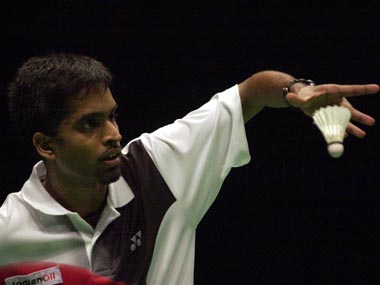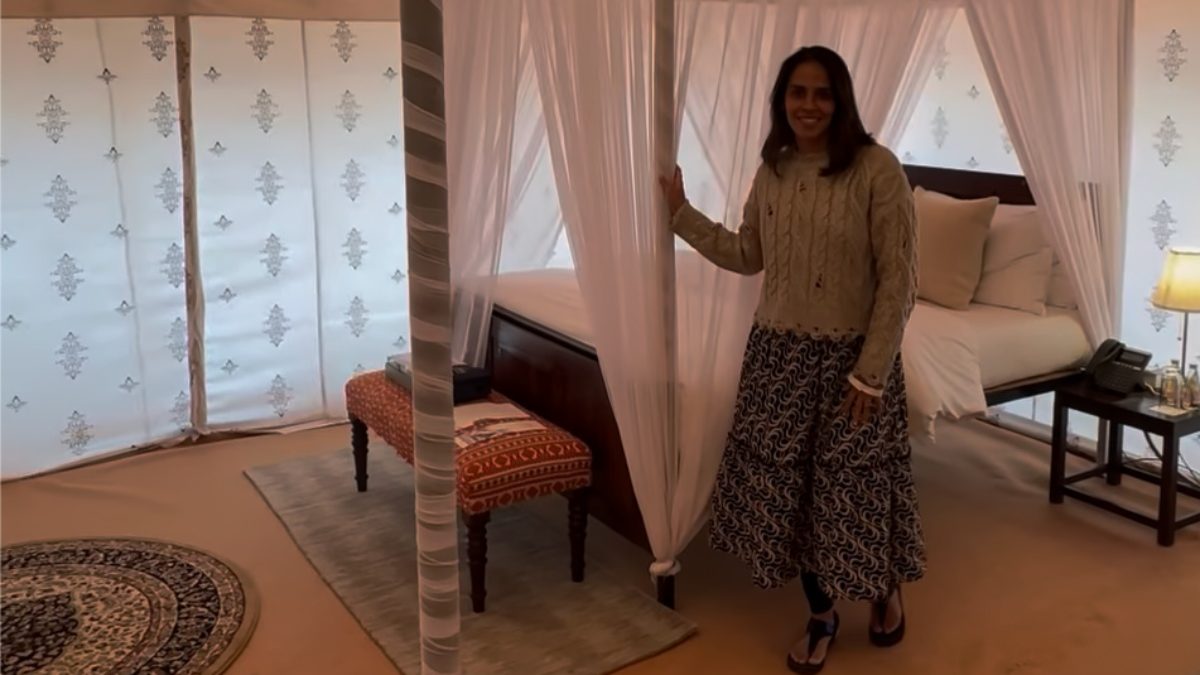In Part-II of our five-part series on Indian badminton, we feature an interview with India Badminton coach Pullela Gopichand at his academy in Hyderabad. In this interview, he talks about everything — ranging from his coaching style, the challenges India faces as they rise in the sport and most importantly, his quest for the next Gopichand.
Click here for Part-I, where we analyse the battle for badminton supremacy with China.
Q: The talent pool in India is huge — be it for any sport, but in badminton specifically, there’s only one Gopichand. And according to many that is India’s weakest point — that we have talent but not enough top coaches.
Gopichand: We don’t seem to nurture the system, we don’t seem to nurture coaches and that’s the key. It’s almost like you can give fish to a person everyday or you can make him learn fishing. One is to produce players and one is to produce coaches. If you are able to produce 10 good coaches, then you are guaranteeing for 30 years or so that every two years there’s going to be a player produced. We don’t put enough in the system — when I say system, it’s incentives for coaches and them having a roadmap of how to go up. This needs to be encouraged and the coach needs to be supreme in terms of decision making. We as a country are clueless about that — we don’t look at all this. Had we made role models or heroes of coaches, we would have people follow them. Let’s say you start off as a young coach, who will you emulate?
We don’t have names — we need to make those names, we need those top guns — award them, reward them and make them important. At the moment what happens is even if you’re a top coach — and I’m excluding myself from this because thankfully with my past reputation as a player and as coach I get away with a lot of things much easier — but even if you’re a good coach, you’re not recognised, you’re working under some deputy director or somebody else who’s in charge and you after the hard work are not really getting rewards. It’s like how the farmers and the middlemen are.
But scrutiny is also needed. If you’re giving him authority, there also has to be a time-frame and he should be responsible for the results. If the results are not good, he should be sacked. World over, being a coach and manager (of a team) is one of the most stressful jobs and it should be that way. We have a system where coaches are not bothered whether they win or lose. It can’t be like that — if they’re not doing well, sack them.
Q: There’s a time you will run out of steam so are you constantly mentoring coaches too?
It’s a tough thing to transfer knowledge because it’s not a science, it’s more like an art and I’m finding it very difficult to produce a battery (of coaches) and it’s not happening so easily. But I’m expecting many of my players who have spent 15-20 years with me to pick from my work and have their experience added on — so I’m waiting for them to stop playing and take over!
Q: Does it give you sleepless nights? Are you tense about it?
Gopichand: Yes, it makes me tense and it makes me wake up early.
Q: We’ve heard that you’re a very hands-on coach and there’s a lot of interesting anecdotes about your coaching style. You want to be involved in every aspect of a players life on and off the court — you keep a very close scrutiny. While this has been working very well, does it work with every player?
Gopichand: See beyond a level, if I were to let go of players who is 13-14 or 17-18 also, it becomes very difficult because then they don’t know what is right or wrong for them. It’s very important to let them know what is right or wrong for them and let them decide. I think at a certain point you just know better than them because you’ve gone through life as a sportsman and you enforce discipline which has to be there.
But, of course, when you are a top player and you start having your own views, there is a need to be accommodating and need to understand the player’s point of view. So for me there are two roles — one is that of a father figure at a certain point and then you become a friend so that they are able to share things — because at the highest level it is very important for players to be mentally fresh.
But somethings… for example someone going to a party might give them lack of sleep which results in bad results. Then again, someone going for a movie or a concert might relax you. At the highest level, that leeway has to be given. But the thinking is that if you play for six-eight hours a day and then you do something in the other 16 hours which are detrimental to what you did in those six hours, it’s not good. If you’re playing you have to rest well and eat well… these things you cannot compromise about.
Q: With such involvement, don’t you think that players sometimes get overly dependent on you — on court side or just as a coach?
Gopichand: There is a chance of this definitely and I didn’t know this problem will come so soon. We’re trying to sort it out and make players more independent. But luckily players now have role models — Saina (Nehwal), (PV) Sindhu and (P) Kashyap — they are mentoring the juniors as well. Things are much better with them performing and having world badminton experience. Also with events like IBL, with them meeting new players and coaches, it helps them.
Q: When you talk about top coaches in the world — people like Alex Ferguson and Phil Jackson — they always wanted to see a bit of themselves in every player they mentored. Probably it’s a conscious thing that happens or maybe unconscious. Do you also want to see a little bit of you in them?
Gopichand: Well not consciously at least. One of the ways I look at it is that I’ve gone through a system in life and achieved from it. We’ve followed particular systems with say Saina’s life or the rest of the players who’ve done well and we’ve kind of got some results. So when I look at a new kid come, I know that a kind of formula works and we start off. And two days down, two months down, two years down if some tweaking needs to be done we do it but the formula remains the same. So obviously the thinking and the mindset might reflect on the player — not definitely intentionally, but I’m sure it does.
Q: These coaches mentioned earlier also had five-ten year plans. Are you also a long-term planner? If yes, has that plan come to fruition or are we yet to see it?
Gopichand: The idea when we started 10 years ago was to get an Olympic medal, but I didn’t know it would come so soon — so that is one. Sport is a 10-year job — we cannot have lesser time for the results to come. So it took us eight-ten years to get there (Olympic medal) and I’m happy about it. But I’m not really a person who’ll plan long term. Knowing the conditions in our country I haven’t looked at sport that way. I come in everyday and want to see players improve. There’s lots more potential and the results in the future could definitely be better.
Q: What do you look for in a player? What is more important — skill or discipline? Is there a Gopichand template for the perfect player?
Gopichand: Even if there’s a little bit of talent, we can hone it into a skill — especially if the player is disciplined. So I’d pick discipline. As for the template, I’d say talent, discipline and most importantly, dedication.
Q: Why do women badminton players mature, get success and peak early compared to the men?
Gopichand: Girls in all facets, in all boxes of life are more mature than men, that’s how they are. For me, there’s a two-year gap that they enjoy. When a girl is 14, she’s already thinking like a 16-year-old. But with Saina and Sindhu, they’ve been physically very good, very strong and that’s why they’ve got their results so fast. But in the men, we didn’t have anybody who’s built up that strength so early so we’ve needed to work on them over a period of time and that’s why we get results late for men.
Q: Does that mean women’s careers will fizzle out earlier than the men’s?
Gopichand: Training age makes a difference, but we have good physios and training systems — I wouldn’t really say they will fizzle out early but there is a possibility. It’s more about the mind rather than the body. They will be playing for a long period of time — by the time they’re 25 some would say they’ve played 10 years of badminton and maybe that could make it stale in their heads and the want for more might not be there. Other than that, I see no reason why these girls cannot play till 30.
Q: There are situations in matches when there are matches side-by-side featuring your players. How do you decide where to stay?
Gopichand: I tell the players whichever match starts first I’m sitting there so I stick there. The only exception sometimes is Saina, because she has been our favourite to win a medal so I don’t want her to be alone for a match. So when her match clashes with somebody she gets priority over the others.
Q: What’s your coaching style? Do you instill fear in your players?
Gopichand: I really don’t. I just come in and want work done. It’s very important for me that as a system, we’re successful and we put in quality work every time. There’s not a loose session and nobody’s fooling around and all this makes a difference.
As for style it depends from player-to-player. Sometimes I can be very patient and soft but sometimes when in a group I can be shouting at them.
Q: If you retired today, would you go out a happy man? Or are there still unfulfilled goals?
Gopichand: Whenever I retire I’ll be happy. I’ve given it all I have and I love the sport and I’ve done what I want to. If you were to dig deeper and I ask whether I’m really happy, then yes I am but there’s so much more potential in the kids which can be achieved. When I look at that, I’m not happy again and tell myself let me accomplish that as well. But I’m happy with what I’ve achieved as a player and as a coach and it’s been very rewarding and satisfying. Whenever someone praises me I’m happy and whenever someone criticises I take it as a challenge and have answered back a lot of people with my work.
Click here for Part-I, where we analyse the battle for badminton supremacy with China.


)




)
)
)
)
)
)
)
)